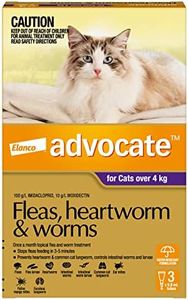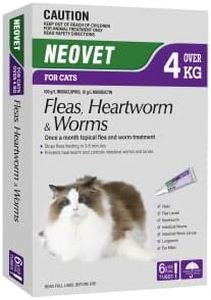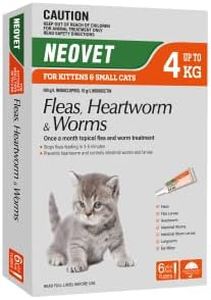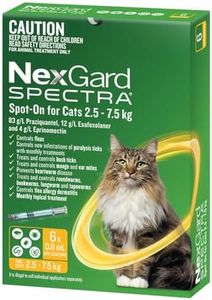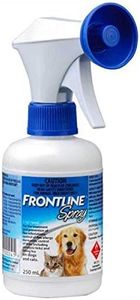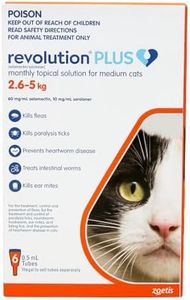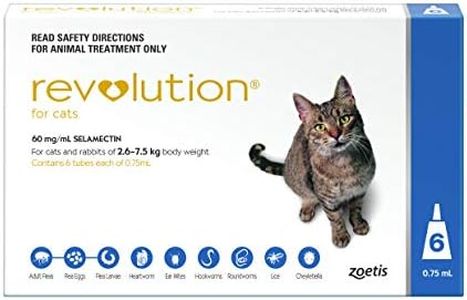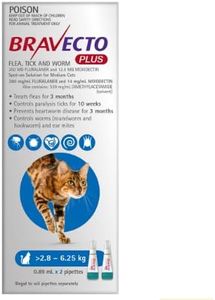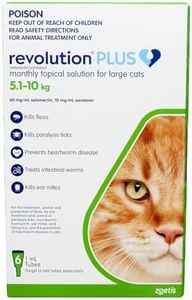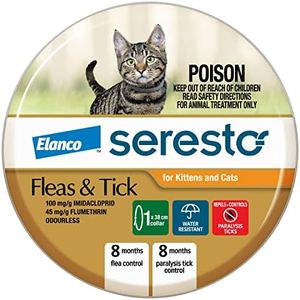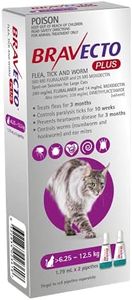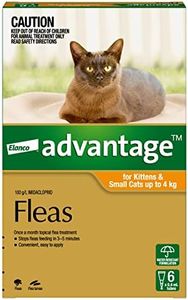We Use CookiesWe use cookies to enhance the security, performance,
functionality and for analytical and promotional activities. By continuing to browse this site you
are agreeing to our privacy policy
10 Best Flea Treatments For Cats
From leading brands and best sellers available on the web.By clicking on a link to a third party's website, log data is shared with that third party.
Buying Guide for the Best Flea Treatments For Cats
Choosing the right flea treatment for your cat can feel overwhelming because there are many options and each has its pros and cons. The key to making a good decision is to understand your cat’s unique needs, such as her age, weight, health, and lifestyle (indoor or outdoor). It’s also important to consider how quickly and effectively a treatment works, how easy it is to apply, and safety for your cat, especially if she has other conditions or takes other medications. Always check with your vet if you’re unsure or if your cat has health issues.Type of TreatmentFlea treatments come in several forms: topical (applied to the skin), oral (chewable or liquid you give by mouth), collars, and sprays. Topical solutions are very popular because they are easy to use and kill fleas for about a month. Oral options work fast and are good if your cat dislikes topical liquids, but some only kill adult fleas and may need to be combined with other methods. Collars offer long-lasting protection but some cats dislike wearing them. Sprays and shampoos are quick solutions but often need frequent reapplication. Your choice should reflect how cooperative your cat is, whether you need quick relief, and how often you’re able or willing to reapply treatment.
Active IngredientsThe active ingredient in a flea treatment is what actually kills the fleas or stops their life cycle. Common ingredients include fipronil, imidacloprid, selamectin, or spinosad. Some ingredients kill only adult fleas, while others target eggs and larvae too, preventing re-infestation. Knowing which ingredient is present helps you judge if the product is effective for severe outbreaks or just prevention. If your cat is sensitive or has had reactions before, or if you have young kittens, always choose treatments labeled specifically for those cases and consult your vet.
Duration of EffectivenessThis refers to how long one application of the treatment will protect your cat from fleas. Most spot-on or oral treatments last about four weeks, while some collars can offer protection for several months. Shorter-acting products like sprays and shampoos may work for only a few days. If you want an easy routine, something with a longer duration may be ideal, but if you’re dealing with a severe outbreak, you might need to combine several types for quick and lasting relief.
Age and Weight LimitsFlea treatments are labeled for cats of certain ages and weights because some ingredients aren't safe for kittens or very small cats. Always check these limits—never use a product meant for adult cats on kittens, and double-check weight recommendations to avoid giving too high or too low a dose. Choose a treatment that’s safe for your cat’s specific age and weight to prevent dangerous reactions.
Ease of ApplicationSome flea treatments are much easier to give than others. Topical treatments only require a quick squeeze on the back of your cat’s neck, collars just slip on (though some cats resist wearing them), and oral medications need your cat to eat a tablet or liquid. Your cat’s temperament and your handling confidence should guide you here—choose the form you can give correctly and consistently.
Water ResistanceThis specification tells you whether your cat can get wet (from rain or bathing) without losing protection. If your cat is often outdoors or needs regular baths, pick a treatment that’s labeled water-resistant to keep the protection working as intended.
